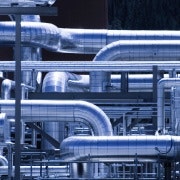How much will Tassie pay for shorting the carbon price?
The carbon price is finally set to go this week with both the Coalition and PUP committed to deliver on their election promises. After all, a promise is a promise. And you can’t go back on a promise unless, that is, if it happens to be about the R-word.
(Any Coalition promise to do with those “utterly offensive” (to quote from Treasurer Joe Hockey) renewables, seems to be somehow exempt from the promise that a promise is a promise...)
The Coalition government has already introduced a bill to repeal ARENA (Australian Renewable Energy Agency) and everyone in the game suspects it is doing all it can to can the RET (Renewable Energy Target). Both would break election promises, making one wonder about the third 'R' to be sacrificed to the Coalition’s evident ideological hatred of the colour g-R-een.
In the current discourse, it seems easy to forget that the carbon price is an environmental measure motivated by the need to reduce growth in atmospheric CO2 levels, not specifically to wreck the economy. Contrary to the Coalition’s protestations, there has been a strong decline in electricity emissions over the period of the carbon price, by about 18 million tonnes per year. While the details of cause and effect can be debated, we are about to see a dramatic demonstration of just how effective carbon pricing has been on electricity emissions, and that could have dire consequences for Tasmanian wholesale electricity prices in the medium term if rainfall declines to below average.
With repeal of the carbon price, the emissions intensity of electricity system is set to rise by 1.5-3.5 per cent. And that makes it a reasonable bet that emissions on the National Electricity Market will increase this financial year for only the second time in six years, even if absolute demand for electricity continues to decline.
Why so?
In the words of respected analyst Hugh Saddler it seems likely “that emissions reductions over the past year may have been “borrowed” from the future”. The suggestion is that by selling down power reserves, hydro operators may have been shorting the emissions market.
And why wouldn’t they? As pointed out in a previous post, hydro benefits from carbon pricing. With the uncertainty in carbon pricing hydro operators have had every incentive to sell as much power as soon as possible.
Two sets of figures tell the story
The first compares electricity sent out from Tasmanian hydro generators with the local demand for electricity in Tasmania.
Figure 1: Sent out energy from Tasmanian generators (black) and total demand for electricity in Tasmania. When sent out energy greatly exceed demands, Tasmanian exports to the mainland via Basslink and vice versa, reflecting a persistent difference in wholesale prices in the two states. When they are in balance, Basslink operates in arbitrage mode sending electricity either way depending on daily fluctuation in prices on the Victoria, effectively tying Tasmanian prices to Victoria.
Source: AEMO's [emission intensity](http://www.aemo.com.au/Electricity/Settlements/Carbon-Dioxide-Equivalent-Intensity-Index) and [aggregated price and demand](http://www.aemo.com.au/Electricity/Data/Price-and-Demand/Aggregated-Price-and-Demand-Data-Files) datasets, image by Mike Sandiford.
The second shows the level of Tasmanian reservoir storage supporting hydro generation.
Figure 2: Tasmanian reservoir storage levels as a percentage of total capacity. Black dots shows the annual average by financial year, while red triangles show the level in the week of the 1st July.
Source: Hydro Tasmania, image by Mike Sandiford
The figures show that Tasmanian hydro generators have been selling electricity into the mainland market at unprecedented rates, drawing down storage levels dramatically since the carbon price was implemented in July 2012.
Levels in the Gordon, which has almost one-third the total storage capacity, are down to near 20 per cent – levels not seen since the Millennium drought despite significantly above average catchment rainfalls over the last year.
Figure 3: Gordon storage levels as a percentage of total capacity. Black dots shows the annual average by financial year, while red triangles show the level in the week of the 1st July. Hydro Tasmania reports the Gordon storage is currently at 22 per cent capacity and falling (13th July – http://www.hydro.com.au/water/energy-data).
Source: Hydro Tasmania, image by Mike Sandiford
Figure 4: Rainfall records for Strathgordon in the Gordon catchment showing above average rainfall over the last 12 months.
Source: Bureau of Meterology
A bit of technical detail is needed to provide the context
Less the local distribution losses, any imbalance in supply (or sent out energy) and demand in Tasmania is accounted for by exchange with the mainland via the Basslink interconnect. In the last years of the Millennium drought up until late 2009, hydro supply in Tasmania was so limited that it could not supply Tasmanian demand, so Basslink flowed mainly south with the extra import of mostly Latrobe valley supplied electricity. Then reservoir levels were at less than 30 per cent capacity.
According to data from the market operator AEMO, in financial year 2008-09, Basslink flow was 90 per cent of the time southwards supplying Tasmania with an additional 2570 gigawatt hours of electricity at an average rate of 280 megawatts.
Basslink has to make a buck, and so there is a price signal attached to such a concerted asymmetric flow. In that year, Tasmanian wholesale prices were around 25 per cent higher than Victoria.
With the breaking of the drought, Tasmanian hydro generation levels increased sufficiently to supply the local demand. With wholesale prices in Victoria at record lows, partly due an unexpected downturn in demand, there was no driver for persistent flow one way or the other across Basslink. Rather, by using the inherent flexibility of hydro generation, Basslink provided Tasmanian generators with the opportunity to send power northwards when prices rose in Victoria, and buy back as prices lowered, making money on the arbitrage. With the two way flows in balance, wholesale prices averaged out at about $30 per megawatt hour in both states. With good rains, reservoir storage levels improved almost 30 per cent between 2009 and 2012, despite the greater generation.
The situation changed with the start of carbon pricing. With storage averaging above 50 per cent, and a doubling of Victorian prices to almost $60 per megawatt hour to accommodate the carbon price (Victorian brown coal electricity produces up to 1.3 tonnes CO2 per megawatt hour incurring a carbon price of $30 per megawatt hour) hydro power was sent northwards across Basslink at unprecedented rates. According to AEMO, in 2012-13 the flow direction was 90 per cent of the time northwards sending a net 2041 gigawatt hours into Victoria. July storage levels have fallen around 25 per cent.
Since the price differential of around $10 per megawatt hour is needed to sustain the flow, and the extra demand for Tasmanian hydro power pushed prices to around $48 per megawatt hour. With no significant extra cost on the generation side, Hydro Tasmania’s before tax profit doubled to $238 million in 20012-13 on the back of a revenue rise of $1 billion to $1.57 billion. Of course, with the majority of that hydro generation still being served into Tasmania, the large part of that profit will have been borne by Tasmanian consumers.
What does it mean for future emissions and prices?
It is inevitable that hydro generation will be scaled back significantly. Firstly, Victorian prices will drop back to pre-carbon prices of around $30 megawatt hour so there will be no price signal for net export. The more than 2000 gigawatt hours supplied into Victoria by hydro in each of the last two years will be picked up by brown coal generation adding an extra 2.5 million tonnes CO2 emissions to the NEM.
Secondly, the drawdown in Tasmanian storage capacity means current rates of generation are unsustainable. With good rains expected to continue in the near term, Hydro Tasmania would appear to have sufficient capacity to meet Tasmanian demand. If so Tasmanian prices should drop, maintaining parity with Victoria at around $30 per megawatt hour.
But the worry is that the draw down of storage to capitalise on the demise of carbon pricing has risked future supply in the event of a return to below average rainfall conditions.
If reserves prove insufficient, and Tasmania again needs to import, Tasmanian wholesale prices will hold above $40-plus per megawatt hour. Further, a return to 2008-09 conditions, when the net flow into Tasmania was some 2600 gigawatt hours, would add a further 3.5 million tonnes to NEM CO2 emissions.
While Latrobe Valley generators in Victoria would relish the opportunity, that scenario could be dire for Tasmania. By forcing wholesale electricity prices above mainland prices, it would mean Tasmanian consumers have copped it both ways. And all that without contributing anything significant to electricity emissions.
If such a scenario were to eventuate, it would be a consequence of policy uncertainty. The uncertainty around carbon pricing has narrowed the window of opportunity and for hydro generators and they appear to have used it to great effect. Had there been bipartisan support for the carbon price, hydro generators would likely have scaled back output to more sustainable levels, benefiting Tasmania for the long-term.
That all makes the politics of Tasmanian electricity once again front and centre especially with Tasmanian PUP senator Jacqui Lambie and her “kennel mates” quite unashamed in imposing their interests on the national agenda.
With how it pans out in the hands of Hughie, the Coalition must be praying it rains cats and dogs, not just PUPS.
![]() Mike Sandiford is a professor of geology and the director of the Melbourne Energy Institute at the University of Melbourne.
Mike Sandiford is a professor of geology and the director of the Melbourne Energy Institute at the University of Melbourne.
Mike Sandiford does not work for, consult to, own shares in or receive funding from any company or organisation that would benefit from this article, and has no relevant affiliations.
This article was originally published on The Conversation. Read the original article here.




















